Table of Contents
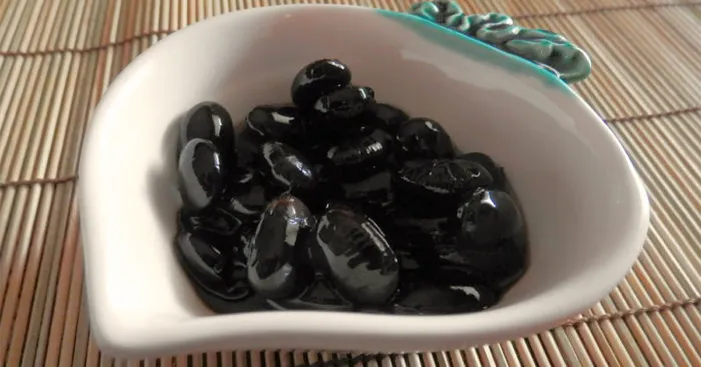
Black soybeans have been gaining traction in recent years as a superfood packed with essential nutrients and health benefits.
These legumes are becoming a regular staple in the diets of health–conscious individuals due to their high protein and fiber content.
In this blog post, we will dive deeper into the nutritional profile of black soybeans and explore the potential health benefits they offer.
We will also provide some tasty recipes and meal ideas to help you incorporate black soybeans into your diet.
Black soybeans in traditional medicine:
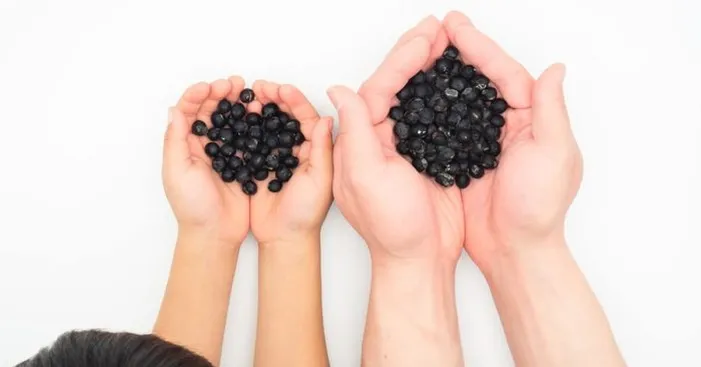
Black soybeans are one of the main famous types of soy beans especially in Asia where people use them in many ways.
It is one of the common ingredients in the Japan and South Korean cuisines and also it is part of the Chinese traditional medicine remedies.
This is because these beans are not just delicious, but they are also full of nutrients and health virtues.
In addition to the taste and texture, people in Korea also choose their ingredients according to their colors.
You may think the color of the ingredients is just important for decoration, but for Koreans, it has another deeper meaning.
South Koreans believe in the healing powers of the 5 traditional Chinese colors: blue, yellow, white, red and black. (1)
Hundreds of years ago, Chinese traditional medicine developed the theory known as “five colors, five organs, and five tastes”.
This theory was inspired by the concept of the “Yin and Yang” and the “five basic elements” of water, fire, wood, earth, and metal.
The colors related to the five basic elements are respectively blue, red, black, yellow, and white.
Each of these colors act differently on the organs of our bodies.
In the same way, each color of food means special benefits for specific organs.
Based on the Chinese medicinal theory, the color black benefits the bladder, the kidneys, ears, and bones. (2)
Black soybeans back in the day:

Many researchers think that soybeans have been cultivated as early as 9000 years ago, but they still have not confirmed that yet. (3)
Only in the 18th century, Americans started cultivating soybeans in Georgia but it remained marginal until the 19th century.
It was less than 200 years ago when people recognized the great values of soybeans.
Nowadays, people use soybeans as a substitute for meat, animal feed as well as in industrial applications like printing, painting, production of antibiotics…
However, it is a common belief that soybeans are originally from central or northern China, possibly Manchuria. (4)
Together barley, wheat, rice, millet, and soybeans make the five sacred grains that gave birth to the Chinese culture and allowed it to expand.
During the period from 200 B.C, and the 1600th, soybeans were introduced in most Asian countries and each chose a local variety.
Black soybeans were first found in Japan during the Heian period, and today they are the most popular soybeans in South Korea and Japan. (5)
Black soybeans nutritional values and health benefits:
Nutritional values:
Black soybeans are part of the Leguminosae family and can grow throughout the year. (6)
The black color of this type of soybean is the result of the fermentation of the seeds.
Nutritionally, that means they are a great source of essential fatty acids and plant-based proteins. (7)
These nutritional data counts for 3.5oz (100g or 2 hand-fulls) of boiled black soybeans: (8)
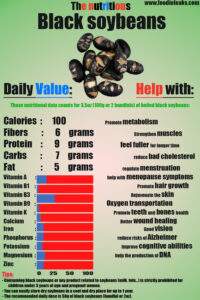
- Calories: 100
- Fibers: 6g
- Protein: 9g
- Carbs: 7g
- Fat: 5g
- A Vitamin: 8%
- B1 vitamin: 17.5%
- B3 vitamin: 3%
- B9 vitamin: 32%
- K vitamin: 4%
- Calcium: 7%
- Iron: 12%
- Phosphorus: 12 %
- Potassium: 10%
- Magnesium: 15%
- Zinc: 12%
One of the most abundant nutrients in black soybeans is amino acids which are essential to strengthen our muscles. ‘(9)
As for those who want to lose weight, those same amino acids make you feel fuller for a longer time with just a small quantity eaten.
Once you consume black soybeans they activate and promote the metabolism by detoxifying it.
Also, these beans contain a certain type of protein capable of metabolizing fats in the liver and reducing the synthesis of bad cholesterol.
Health benefits:
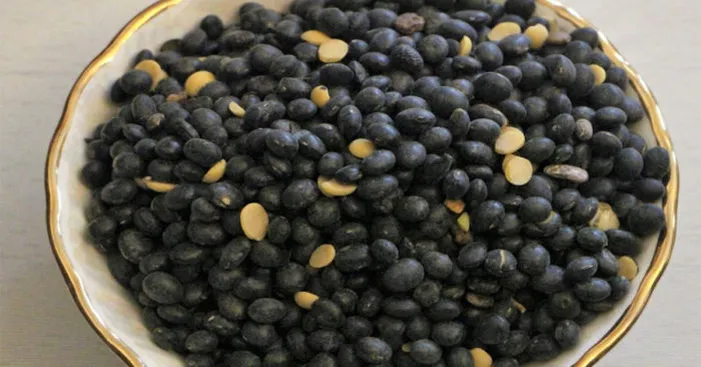
Black soybeans are full of health benefits as they can help control our weight and reduce bad cholesterol.
Researchers conducted a study where they devided 4 groups of mice some of which had black soybeans powder supplement.
The results showed a reduced level of bad cholesterol in the liver of the mice that were fed black soybeans despite their high cholesterol diet. (10)
Black soybeans also help the kidneys expel toxins from the body and can help regulate menstruation.
In fact, black soybeans are recommended for menopausal women because it helps them reduce blood pressure and overcome possible painful menopause symptoms.
Proteins and fatty acids:
Furthermore, in South Korea soybeans are called “ground beef” due to their large content in proteins and essential fatty acids.
These proteins found in black soybeans promote hair growth and prevent its loss.
In traditional Korean medicine, there are many recipes for hair based on black soybeans.
You can boil black soybeans in water, let it cool then use that water to rinse your hair.
The amino acids in black soybeans boosts the production of collagen which is effective in rejuvenating the skin. (11)
Minerals:
One of the most abundant minerals found in black soybeans is Iron.
By consuming black soybeans you would ensure that your body is getting its daily need in iron.
It should be noted that iron exists in every cell of our bodies as it is responsible for oxygen transportation.
Also, it plays a role in the creation of new cells, neurotransmitters, and hormones.
Another mineral you can find in black soybeans, mostly in tofu or soy drinks, is calcium.
Did you know that the most abundant mineral in the body is calcium? (12)
Now you know how important it is to supply our bodies with their daily need for calcium.
One of the essential roles calcium plays is contributing to teeth/bone formation and maintaining overall health.
In addition to calcium and iron, black soybeans are a good source of zinc.
Zinc is like calcium linked to many-body generation processes including the formation of our genetic material.
Also, zinc promotes wound healing, interacts with sex hormones, and necessary for fetal development in the case of pregnancy. (13)
In the pancreas, zinc is essential for the formation, storage, and release of insulin.
Vitamins:
Among the most abundant vitamins in black soybeans are vitamins in the B group including B1, B2, B3, and B9.
Vitamin B2 plays a key role in the production of energy and it is also involved in the production of red blood cells and hormones. (14)
Vitamin B9 is also knows as “Folate” and sometimes called “the vitamin of the pregnant woman”.
This is because of its protective effect against many congenital malformations of the neural tube such as anencephaly and spina bifida. (15)
In addition to that, vitamin b9 is also essential for the production of DNA and the proper functioning of the nerve and immune systems.
Alongside minerals, proteins, and vitamins black soybeans are a good source of lecithin, a type of fat used in the pharmaceutical industry to make medicines. (16)
Many studies have shown the capability of lecithin to stimulate brain growth for children and improve their cognitive abilities.
Also, lecithin is also effective to treat Alzheimer’s, dementia, and many memory disorder problems.
Finally, these are the most know benefits you can get from black soybeans but it is obvious that we must consume them regularly to enjoy these benefits.
In the future, try purchasing more black soybeans products so if you’re thirsty you can drink soy milk. (17)
Also, when you make white rice you can add soy sauce on top for flavor and enjoy the above health benefits.
How to cook and consume black soybeans:
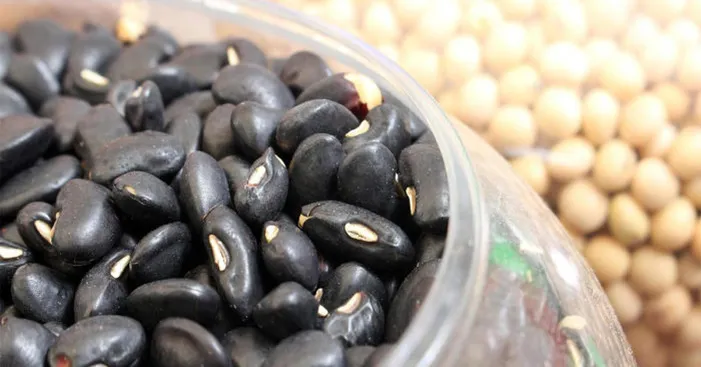
The best way to include black soybeans easily in your dishes is by boiling them so they become softer and easier to blend in.
To boil these beans here what to do:
- First of all, wash then soak 7oz (200g) of black soybeans in water for 6 hours.
- Then, boil the black soybeans in hot water for 20 minutes.
- Drain the cooked beans and serve them with salad or on top of any dish like olives.
Black soybeans and gochujang salad:

Ingredients:
- 2 to 3 oz (50 to 80g) Black soybeans.
- 2 tbsps. of walnut oil.
- 1 tbsp of Gochujang.
- 2 tbsps. of rice vinegar.
- 1 tbsps. of sugar powder.
- 5 oz (150g) of Cabbage.
- 12oz (350g) tomatoes.
Preparation:
- mix sugar powder, rice vinegar, walnut oil, gochujang (Korean chili condiment).
- Cut cabbage into small cubes, add diced tomatoes, now mix the gochujang sauce with the sliced cabbage and tomatoes.
- Grill black soybeans, for a couple of minutes then add them to the gochujang sauce alongside cabbage and diced tomatoes.
- There you go, serve it a salad dish and enjoy it with your loved ones!
Black soy rice and celery stick:
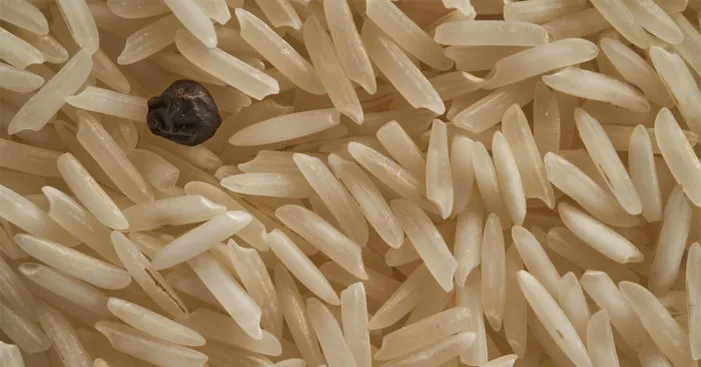
This recipe is perfect for a light dinner of 4 people.
The ingredients:
- 2 onions.
- 4tbsp of rice vinegar.
- Dried black soybeans (8oz or 200g).
- Olive or sunflower oil.
- Pepper and salt.
- 8oz (200g) of round rice.
- 2 stalk of celery.
- 2 pieces of Kombu seaweed.
- 2 cups (500ml) of homemade broth.
- Pepper and salt.
Preparation:
- A day before you plan to cook this delicious dish, soak the black soybeans in water and keep them soaked overnight.
- The day after, drain the soybeans then boil them in 3 times their volume for 40 mins with a piece of kombu seaweed, then drain them and set them aside. (18)
- Chop the onion and celery stalk as well as the cooked kombu seaweed.
- Fry the rice in oil for a couple of minutes while stirring, until the grains of rice become slightly transparent (just like risotto).
- Add the chopped onion, celery stalk, and kombu seaweed to the rice and cook them all together.
- Deglaze the ingredients with rice vinegar without stirring until the added vinegar is all absorbed.
- Now add the cooked black soybeans to the pan and cook them alongside the rice, tomatoes, onion, celery, kombu seaweed and rice vinegar.
- You can now serve the dish and enjoy it with the rest of your family!
This dish is perfect for vegetarians or people who can’t eat meat.
This is because black soybeans are a great source of protein and can replace meat.
Did you know that rice with chicken meat contains almost the same protein as black soy rice!
How to store soybeans?
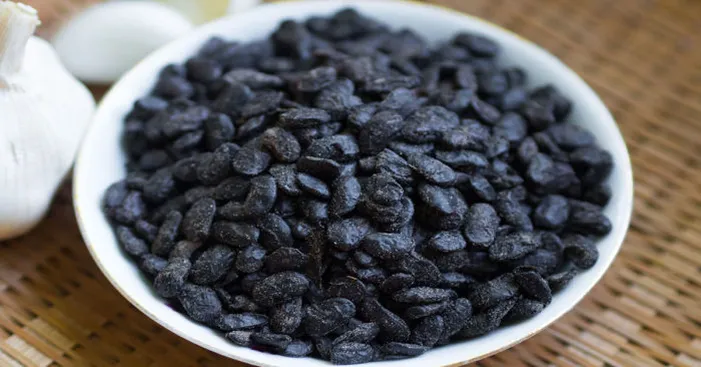
Soybeans exist in many forms as you could get them fresh, dried, flour, milk, tofu, or the famous soybeans or miso sauce. (19)
Storing tips depends on the product of soybeans for instance:
- Fresh soybeans:
Boil them in water for 5 mins, then plunge them in iced water to cool.
After that, dry the soybeans and place them in a freezer. - Dried soybeans:
You can easily store dry soybeans in a cool and dry place for up to 1 year. - Soy or miso sauce:
These sauces can be stored in a closed jar/bottle for more than 3 years.
Once you opened the jar, place it in the refrigerator and it can last for 1 year. - Soy flour:
To extend the lifespan of soy flour, make sure you store it in the refrigerator or freezer. - Soy milk, natto, tofu:
These soy products can last up to two weeks in the refrigerator.
Possible black soybeans side effects:

Hormonal effect:
Black soybeans are a source of isoflavone which is capable of binding to estrogen receptors and interferes with hormonal function. (20)
The interference in the estrogen hormonal level are stimulated to replace any hormonal deficiency caused by menopause.
As a result, soybeans can be beneficial for women in their menopause dealing with hot flushes (flashes). (21)
Even though that may sound tempting, in other cases consuming black soybeans may lead to bad consequences.
For instance, the same interference caused by isoflavone may promote the proliferation of cancerous cells or accelerate cancer if it already exists.
Even though most of the above remain hypothesis and nothing is confirmed yet, some groups of people should stay away from soybeans.
Pregnant women, breastfeeding women, young children (under 3 years of age), these groups of people are more vulnerable to phytoestrogen.
In fact, isoflavones in black soybeans may coincide with the fetus or the kid’s cell growth or the development of sexual organs.
Thus, consuming black soybeans or any product related to soybeans (milk, tofu…) is strictly prohibited for children under 3 years of age and pregnant women.
Allergic reaction:
Among food allergies, soybeans come in the top 5 list of the most common allergic food. (22)
A soy allergy appears when the immune system identifies soy as harmful by mistake.
In some cases, soy can cause life-threatening reactions and should be taken seriously.
Just like most food allergies, soybean allergy symptom can be any of the things listed:
- Rash or hives.
- Itching.
- Swelling of the face, lips, or tongue.
- Difficulty breathing or swallowing.
- Anxiety.
- Paleness and dizziness.
- A sudden drop in blood pressure.
- Vomiting, Diarrhea, or cramps.
- Loss of consciousness (rarely).
If you are allergic to soybeans, it is very important to stay away from consuming any soy-based product.
Soy allergy is most common in young kids, look for skin rash or facial swelling as those are the symptoms of soy allergy in infants.
If you see any of those symptoms, your doctor can confirm any suspicion that your baby may have a soy allergy.
However, most soy allergies occur during childhood and disappear after a few years except for severe soy allergies that could last a lifetime.
Effect of the thyroid gland:
This possible side effect is not sacred to young kids or pregnant women but can happen to anyone who consumes a lot of black soybeans regularly.
Eating too many soy products can unbalance hormone treatments in the case of hypothyroidism. (23)
It is because it creates an excessive need for thyroxine, which in the case of hormone treatments results in an increased dose. (24)
Thus, for those dealing with hypothyroidism, it is advisable to stay away from soy products.
References:
(1): Medicinal food understanding in Korean gastronomic culture | Journal of Ethnic Foods | Full Text (biomedcentral.com)
(2): Health Benefits Of Black Rice And Other Dark Foods – All Things Health
(3): The Plant History of the Marvelous Soybean (thoughtco.com)
(4): History of Soybeans and Soyfoods in China and Taiwan, and in Chinese Cookbooks, Restaurants, and Chinese Work with Soyfoods Outside of China (1024 BCE to 2014) – SoyInfo Center
(5): Visit Tambasasayama | Tambasasayama, a town renowned for food and nature
(6): Soybeans and soy foods – Better Health Channel
(7): New black soybeans have more protein than beans and approved taste – Portal Embrapa
(8): Organic Black Soy Beans Nutrition Facts – Eat This Much
(9): Soybean Amino Acids in Health, Genetics, and Evaluation | IntechOpen
(10): The inhibitory effect of black soybean on hepatic cholesterol accumulation in high cholesterol and high fat diet-induced non-alcoholic fatty liver disease – ScienceDirect
(11): 4 Benefit of Soybean | Skin Brightening with Soybean | JOHNSON’S® Skincare Middle East (johnsons-me.com)
(12): Minerals – Diet and Health – NCBI Bookshelf (nih.gov)
(13): Eating Soya Beans during Pregnancy: Health Benefits & Risks (firstcry.com)
(14): Nutritions and Health Benefits of Black Soybean | Cigna 信諾
(15): Facts about Anencephaly | CDC
(16): Influence of soy lecithin administration on hypercholesterolemia – PubMed (nih.gov)
(17): Soy Milk: Health Benefits, Nutrients per Serving, Preparation Information, and More (webmd.com)
(18): Prevention and Treatment – Vaccines, Aging, and More (verywellhealth.com)
(19): https://www.bonappetit.com/story/what-is-miso
(20): The Specific Role of Isoflavones on Estrogen Metabolism in Premenopausal Women – PMC (nih.gov)
(21): Menopause – NHS (www.nhs.uk)
(22): Major Allergens: The Big Nine – School Nutrition Association
(23): Soy: Does it worsen hypothyroidism? – Mayo Clinic
(24): Can I eat soy if I have an underactive thyroid? (markvanderpump.co.uk)

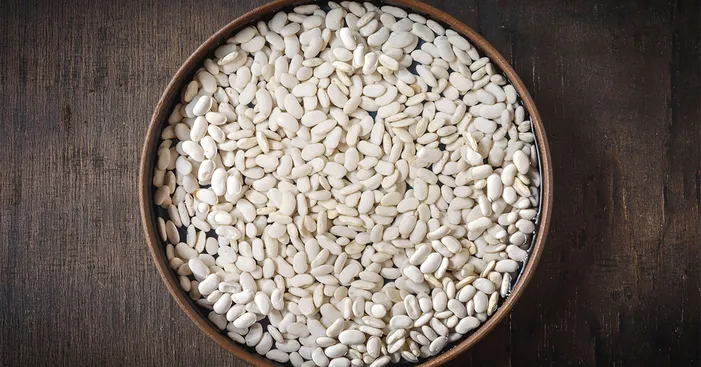
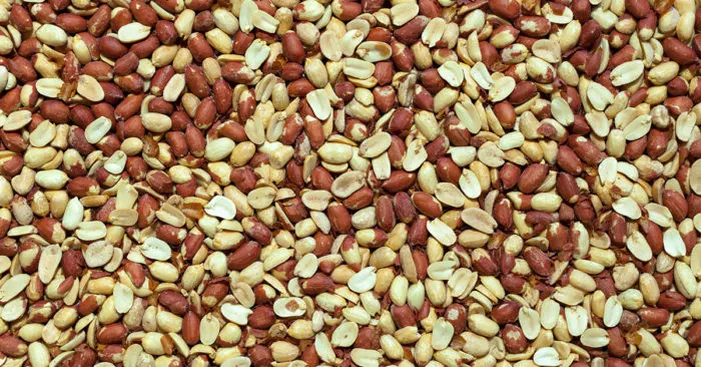
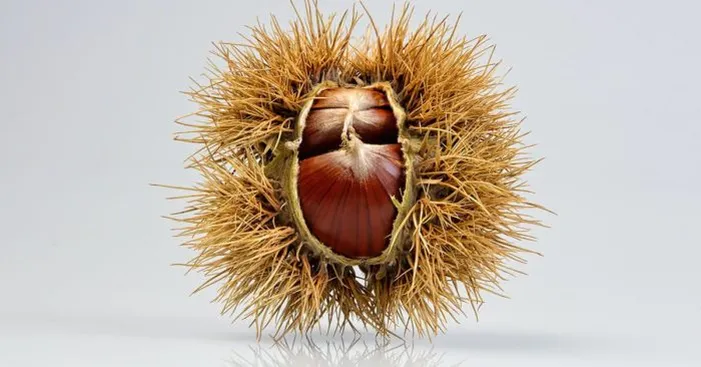
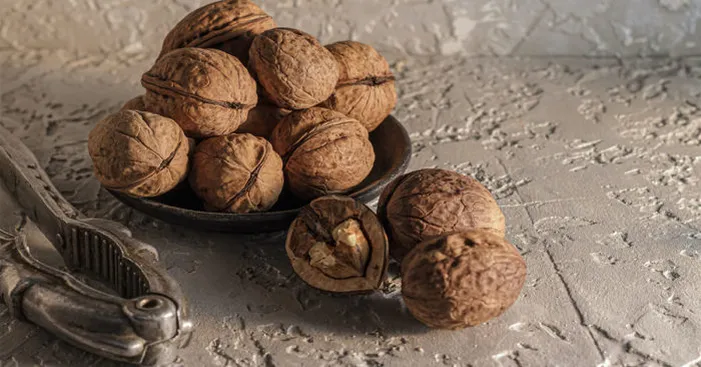
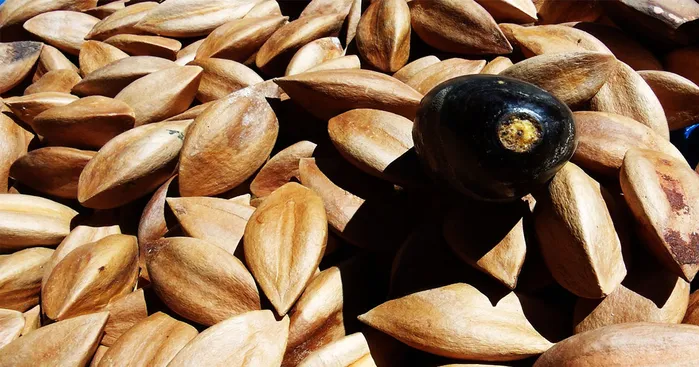

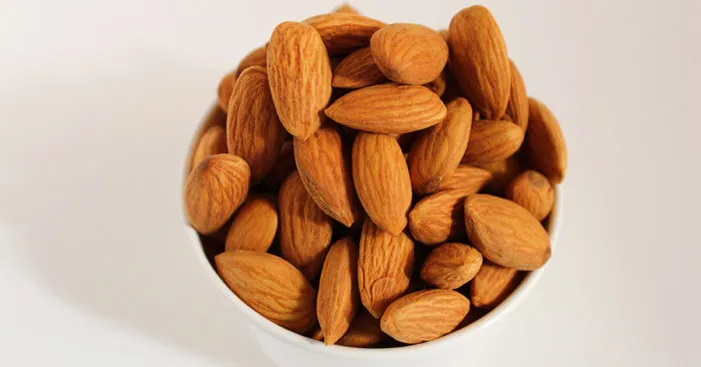
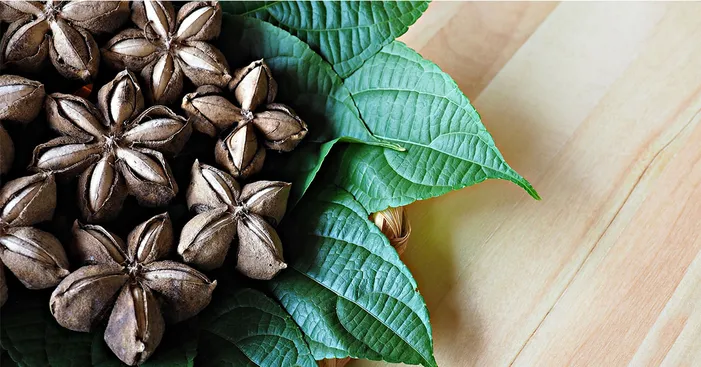
7tgiky
mf9zsw